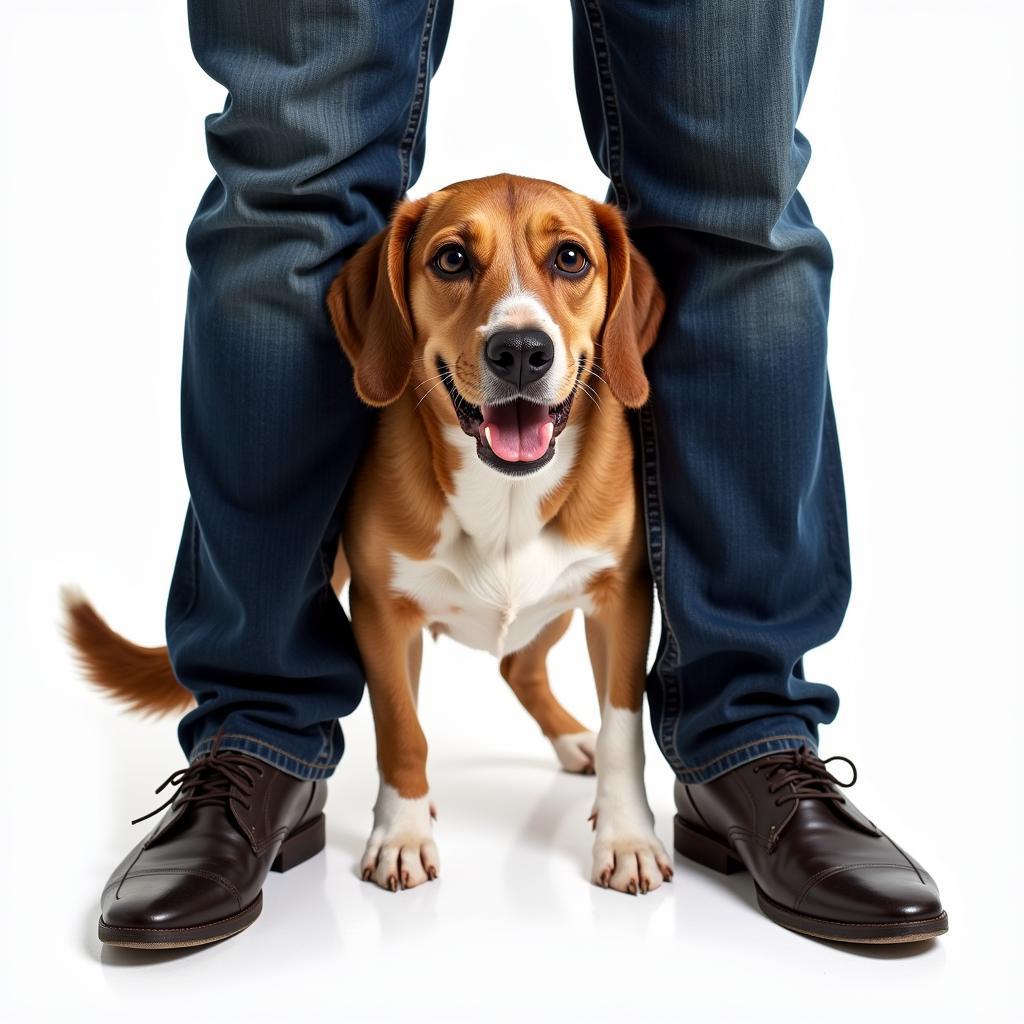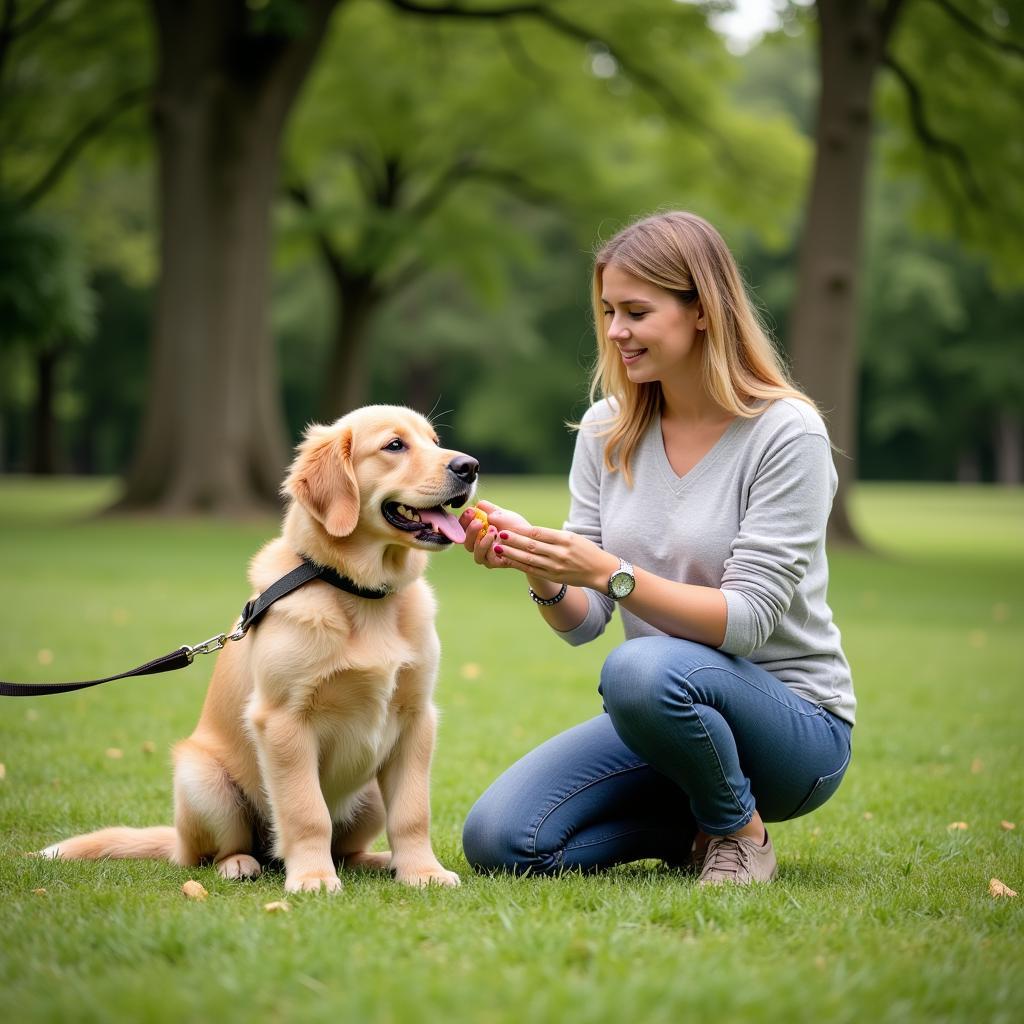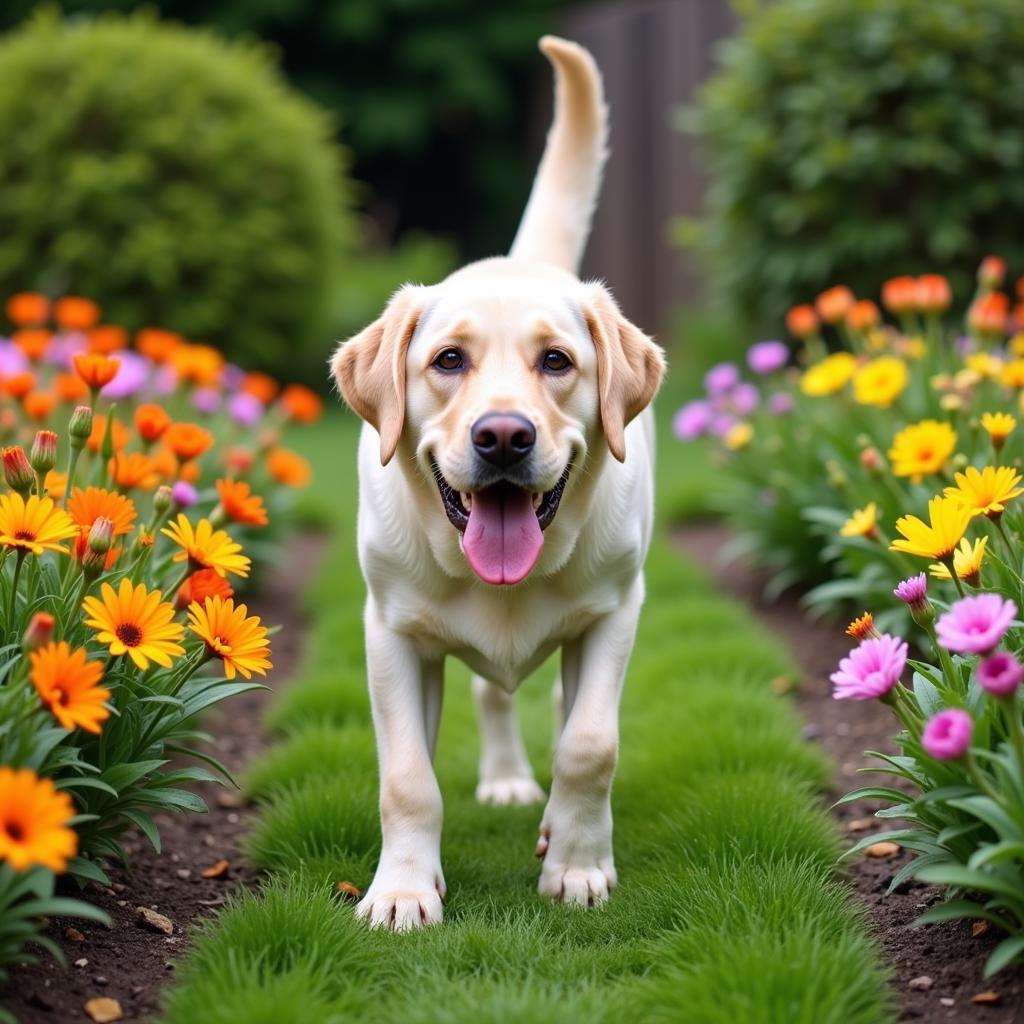Does your furry friend refuse to set a paw outside without you by their side? You’re not alone! “My dog won’t go outside without me” is a common concern among dog owners. While it might seem like a simple case of clinginess, there could be various underlying reasons for this behavior. This article will delve into why your dog might be exhibiting this behavior and offer effective strategies to help them gain confidence and independence.
 Dog hiding behind owner's legs
Dog hiding behind owner's legs
Why Won’t My Dog Go Outside Alone?
Several factors can contribute to your dog’s reluctance to venture outdoors solo. Understanding the root cause is crucial to implement the most effective solutions. Here are some possibilities:
1. Separation Anxiety
One of the most common culprits is separation anxiety. Dogs with this condition become extremely distressed when separated from their owners.
Signs of separation anxiety:
- Excessive barking or howling when left alone
- Destructive behavior, such as chewing or scratching
- Inappropriate urination or defecation
If you suspect separation anxiety, consult a veterinarian or a certified dog behaviorist.
2. Fear or Anxiety
The outdoors can be a scary place for some dogs, especially if they haven’t been properly socialized. Loud noises, unfamiliar people, or other animals can trigger fear and anxiety.
Signs your dog might be fearful:
- Tail tucked between legs
- Ears flattened against the head
- Whining or trembling
3. Lack of Confidence
Some dogs, especially puppies or those new to a home, might simply lack the confidence to explore the world independently. They might see you as their source of safety and security and hesitate to leave your side.
4. Medical Conditions
In some cases, underlying medical conditions can cause reluctance to go outside. Pain, discomfort, or vision problems can make it challenging for your dog to navigate the outdoors. If your dog’s behavior changes suddenly, always consult a veterinarian.
How Can I Help My Dog Go Outside Without Me?
Now that we’ve explored the potential reasons let’s dive into some practical strategies to help your dog conquer their fear and enjoy solo outdoor adventures:
 Dog on a leash being trained by its owner
Dog on a leash being trained by its owner
1. Gradual Desensitization and Counter-Conditioning
This method involves gradually exposing your dog to being alone outside while associating it with positive experiences. Start with short durations, gradually increasing the time as your dog becomes more comfortable.
- Step 1: Begin by simply opening the door and tossing a high-value treat outside.
- Step 2: Once your dog readily goes out for the treat, increase the distance slightly.
- Step 3: Gradually increase the time your dog spends outside alone, always pairing it with positive reinforcement.
2. Create a Positive Association with the Outdoors
Make outdoor time enjoyable and rewarding for your dog:
- Play fetch or engage in other fun activities: This helps create positive associations with being outside.
- Use high-value treats: Reward your dog for even small steps towards independence.
- Praise and encouragement: Let your dog know how proud you are of their progress.
3. Establish a Safe Space
Ensure your dog has a safe and comfortable space outside, such as a fenced-in yard or a designated potty area.
- Provide shelter: A dog house or covered area can offer protection from the elements.
- Familiar scents: Leave a blanket or toy with your scent in their designated space to provide comfort.
4. Address Underlying Anxiety
If your dog’s reluctance stems from separation anxiety, consult a professional:
- Veterinarian: Can rule out medical conditions and recommend medication if necessary.
- Certified Dog Behaviorist: Can create a tailored behavior modification plan.
5. Be Patient and Consistent
Remember, building confidence takes time and patience. Be consistent with your training and celebrate every milestone, no matter how small.
 A confident dog exploring the garden
A confident dog exploring the garden
Conclusion
Addressing your dog’s reluctance to go outside without you requires patience, understanding, and a tailored approach. By identifying the root cause and implementing the appropriate strategies, you can help your furry friend overcome their fears and enjoy the freedom and enrichment of outdoor exploration. Remember, with love, support, and professional guidance when needed, you can empower your dog to embrace the world with confidence!
FAQs
- How long does it take to train a dog to go outside alone? There’s no one-size-fits-all answer. Every dog is different, and the training duration depends on the severity of the issue, the dog’s temperament, and the consistency of training.
- Is it cruel to leave my dog outside alone if they have separation anxiety? Yes, it can be very distressing for dogs with separation anxiety. It’s crucial to address the underlying anxiety through professional help and gradual desensitization.
- Can I use a crate to train my dog to go outside alone? While crates can be helpful for potty training, they aren’t recommended for addressing this specific issue, as they might exacerbate anxiety.
- What if I’ve tried everything, and my dog still won’t go outside alone? Don’t give up! Consult a certified dog behaviorist for personalized guidance and support.
Need More Help?
If you’re still facing challenges or have questions, we’re here to help. Contact our dedicated customer support team at Phone Number: 0902476650, Email: [email protected] Or visit us at: 139 Đ. Võ Văn Kiệt, Hoà Long, Bà Rịa, Bà Rịa – Vũng Tàu, Việt Nam. Our team is available 24/7 to provide assistance.





